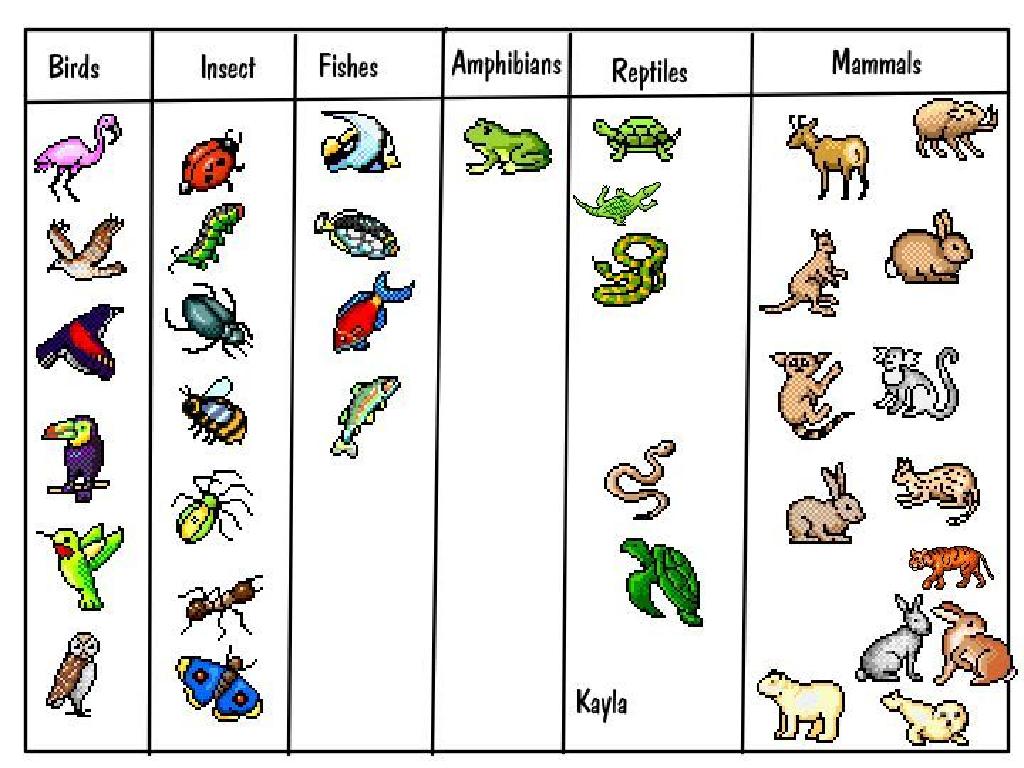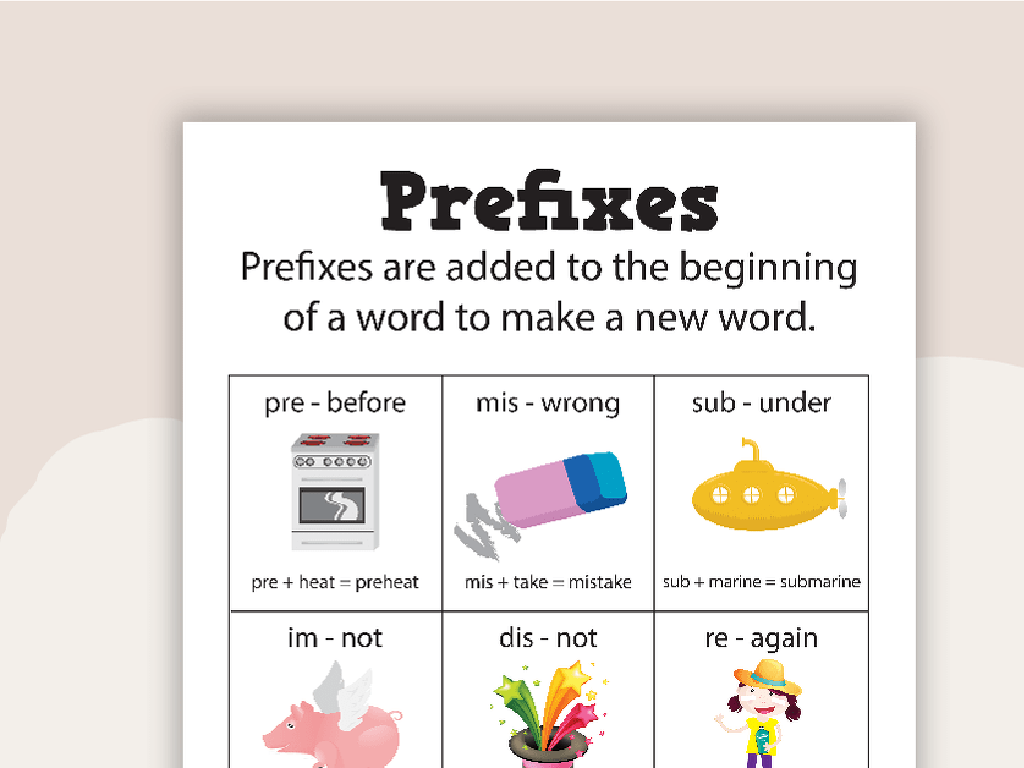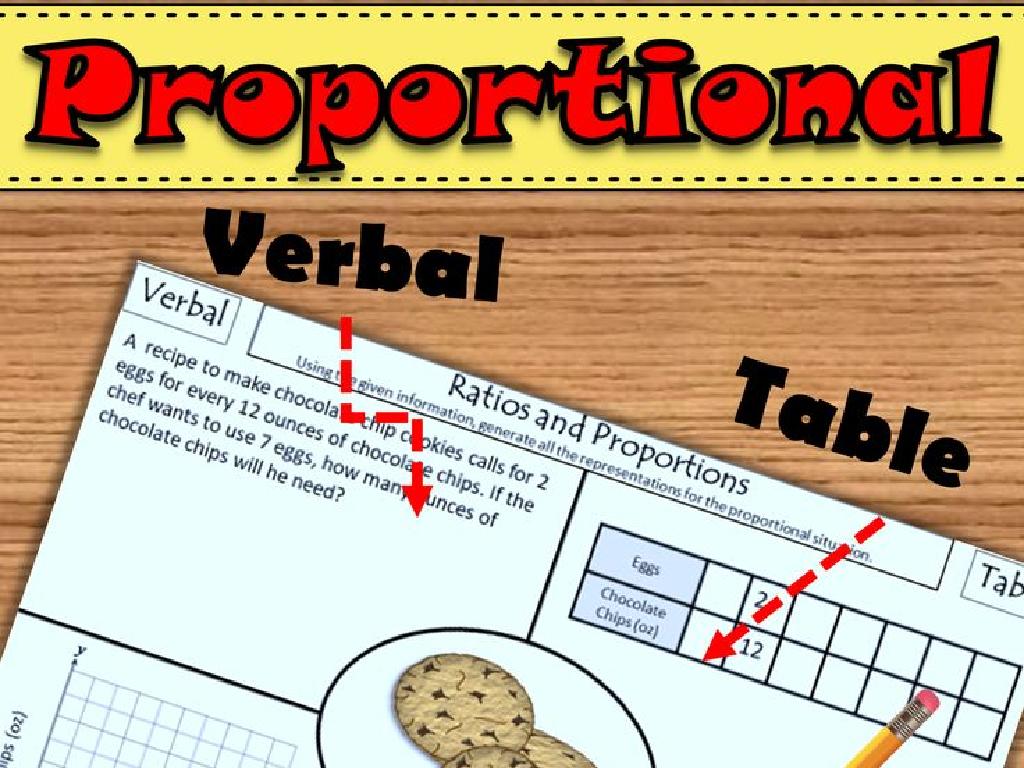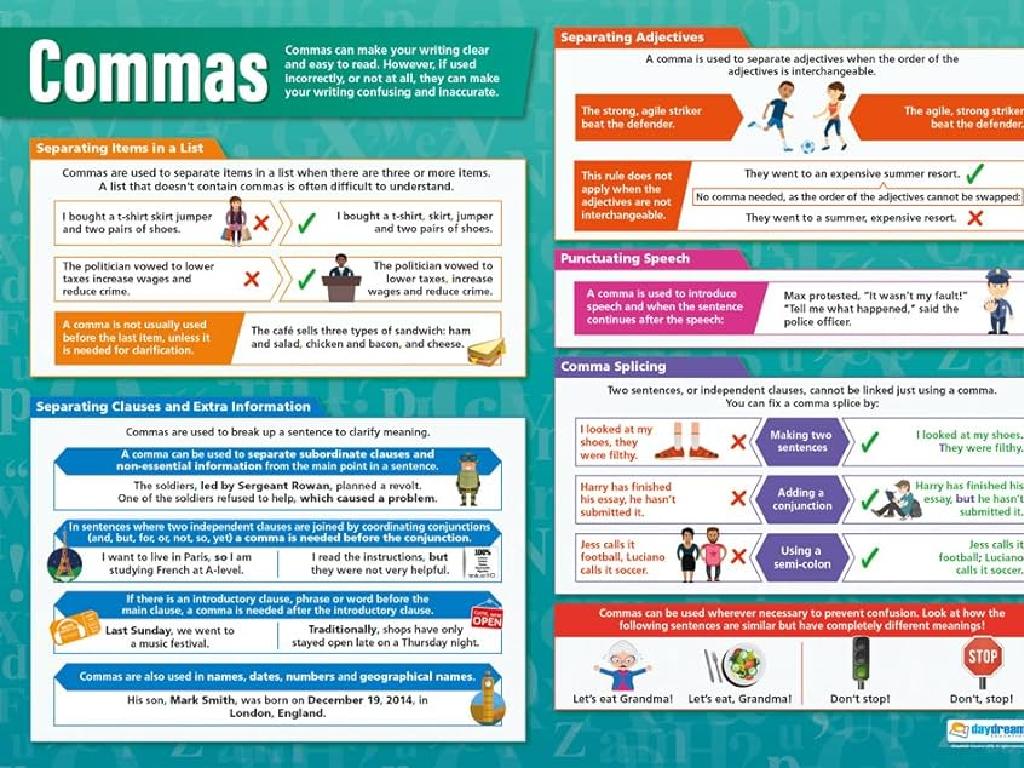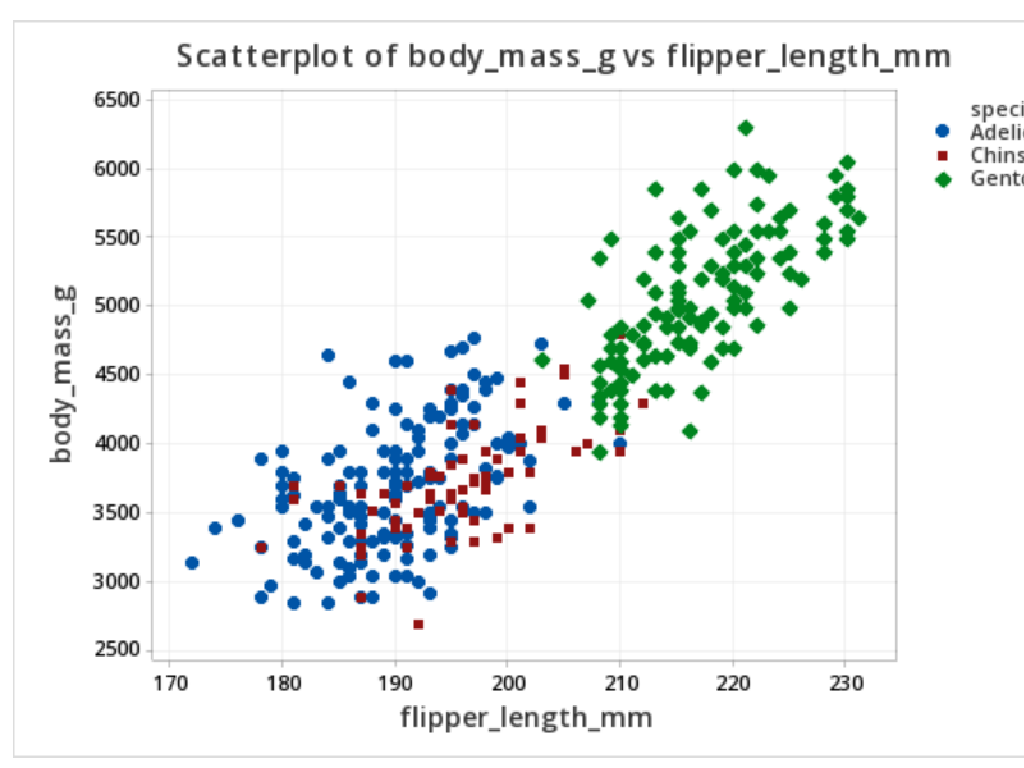Adjacent Angles
Subject: Math
Grade: Fourth grade
Topic: Angle Measurement
Please LOG IN to download the presentation. Access is available to registered users only.
View More Content
Today’s Adventure: Exploring Adjacent Angles!
– Angles are everywhere in daily life
– Look at corners of books, doors opening, etc.
– Review: An angle is formed by two rays
– The point where they meet is called the vertex
– Adjacent angles share a common side
– They must also have the same vertex
– Let’s find angles around us
|
Begin the lesson by highlighting the presence of angles in everyday objects to make the concept relatable. Review the definition of an angle as the space between two intersecting lines or rays, with a common endpoint known as the vertex. Introduce adjacent angles as a pair of angles that have a common side and a common vertex but do not overlap. Encourage students to observe and identify angles in the classroom, like the corners of a desk or the hands of a clock, to reinforce the concept. This will help them visualize and better understand adjacent angles in a tangible way.
Exploring Angles
– Angles: When two lines meet
– Think of the hands of a clock at 12:00
– The meeting point: Vertex
– It’s like the corner of a square
– Measuring angles in degrees
– Like a slice of pizza or a pie
– Recognizing angles in objects
|
This slide introduces the basic concept of angles to fourth-grade students. Begin by explaining that an angle is created when two lines come together at a single point, known as the vertex. Use everyday objects to illustrate this point, such as the hands of a clock or the corners of a room. Emphasize that angles are measured in degrees, which helps us understand their size. Encourage students to look around the classroom for objects that might contain angles, such as books, desks, or windows, to help them recognize angles in their environment. This will prepare them for understanding more complex concepts like adjacent angles.
Meet the Adjacent Angles
– Adjacent angles share common side
– They also share a common vertex
– ‘Adjacent’ means ‘next to’
– Example: Angles on a straight line
– Like two angles adding to 180° at a point
– Practice finding adjacent angles
– Look around the room for real-life examples
|
This slide introduces the concept of adjacent angles to fourth-grade students. Begin by explaining that adjacent angles share a common side and a common vertex, which means they touch at one point and spread out from that point. The term ‘adjacent’ comes from Latin and means ‘next to,’ helping students understand that these angles are side by side. Use the example of two angles that are on the same straight line at a point, which together make a straight angle (180°). Encourage students to find and draw examples of adjacent angles in the classroom, like corners of books or desks. This will help them recognize adjacent angles in various contexts and understand their properties.
Properties of Adjacent Angles
– Adjacent angles don’t overlap
– Combine to form larger angles
– Like puzzle pieces, two angles can join to make a bigger angle.
– On a line, they sum to 180°
– If the angles sit on a straight line, they always add up to a straight angle, which is 180 degrees.
– Practice finding adjacent angles
– Look around the room for examples of adjacent angles, like corners of a book.
|
This slide introduces students to the concept of adjacent angles. Emphasize that adjacent angles are next to each other but do not cover the same space. Demonstrate how two or more angles can be combined to measure a larger angle. Use a straight edge or the classroom whiteboard to show that when adjacent angles line up straight, they add up to 180 degrees, forming a straight angle. Encourage students to find and measure adjacent angles in the classroom to apply what they’ve learned. Provide rulers and protractors for hands-on practice, and consider using real-life objects to illustrate the concept.
Identifying Adjacent Angles
– Examples of adjacent angles
– Spot adjacent angles in pictures
– Look for angles that share a common side and vertex
– Discuss with a neighbor
– Explain why they’re adjacent
– Angles are adjacent if they have the same vertex, share a common side, and don’t overlap
|
This slide is designed to engage students in the practical identification of adjacent angles through visual examples. Start by showing pictures with various angles and guide the students to identify the adjacent ones. Encourage them to work with a partner to foster collaborative learning and discussion. This peer interaction helps solidify their understanding as they justify their reasoning. As a teacher, facilitate the discussion by asking probing questions and providing feedback. Make sure to clarify that adjacent angles must share a common side and vertex and cannot overlap. This activity will prepare them for more complex concepts involving angles.
Adding Adjacent Angles
– Adjacent angles sit side by side
– They share a common vertex and arm
– Add angles to find the larger angle
– When two angles are next to each other, add their degrees to find the total
– Practice with Angle A and B
– Angle A is 30 degrees, Angle B is 60 degrees, what’s their sum?
|
This slide introduces the concept of adjacent angles to fourth-grade students. Adjacent angles are two angles that have a common side and a common vertex (corner point) and do not overlap. It’s important for students to recognize that when they are adding adjacent angles, they are essentially measuring the larger, combined space of the two angles. The practice example uses simple, round numbers to ensure clarity in understanding. Encourage students to use a protractor for measuring angles and to visualize the concept by drawing their own adjacent angles. The activity should reinforce the idea that the sum of the measures of adjacent angles is the measure of the larger angle formed by them.
Class Activity: Angle Detectives
– Team up with a partner
– Hunt for adjacent angles
– Look for angles that share a common side and vertex
– Measure the angles found
– Use a protractor to measure the angles accurately
– Record and present findings
– Write down the measurements and where you found them
|
In this interactive class activity, students will pair up to search for adjacent angles in their classroom environment. Adjacent angles are two angles that have a common side and a common vertex (corner point) and don’t overlap. Provide each pair with a protractor and a worksheet to record their findings, including the location and measurement of each set of adjacent angles. Encourage them to look for angles in objects like books, tables, and windows. After the activity, have each team present their findings to the class, discussing how they identified and measured the angles. This will help reinforce their understanding of adjacent angles and how to measure them.
Conclusion & Homework: Angle Exploration
– Congrats, Angle Detectives!
– Adjacent angles are everywhere
– Homework: Draw & measure 5 angle pairs
– Use a protractor to measure the angles accurately
– Share your findings tomorrow
– Be ready to discuss how you found them
|
Well done to all the students for learning about adjacent angles! As a reminder, adjacent angles share a common vertex and side but do not overlap. For homework, students are tasked with finding examples of adjacent angles in their environment, drawing them, and then measuring each angle with a protractor. This exercise will help reinforce their understanding of the concept and its practical application. Encourage creativity in the angles they choose to draw and measure. In the next class, we’ll discuss their findings, which will allow students to see the variety of adjacent angles that exist in the world around them.

